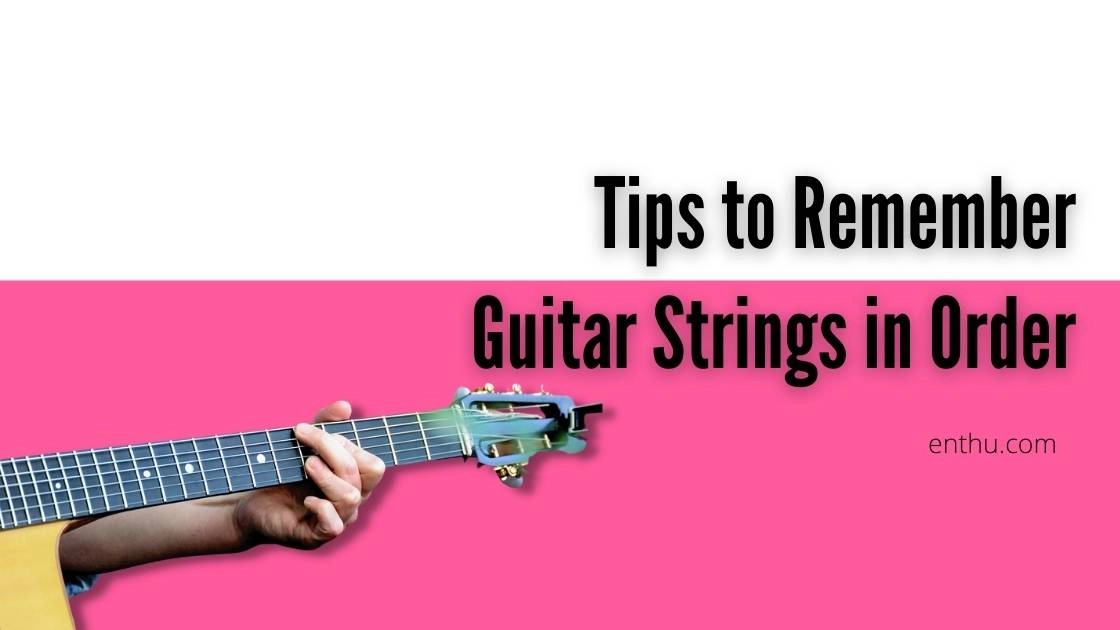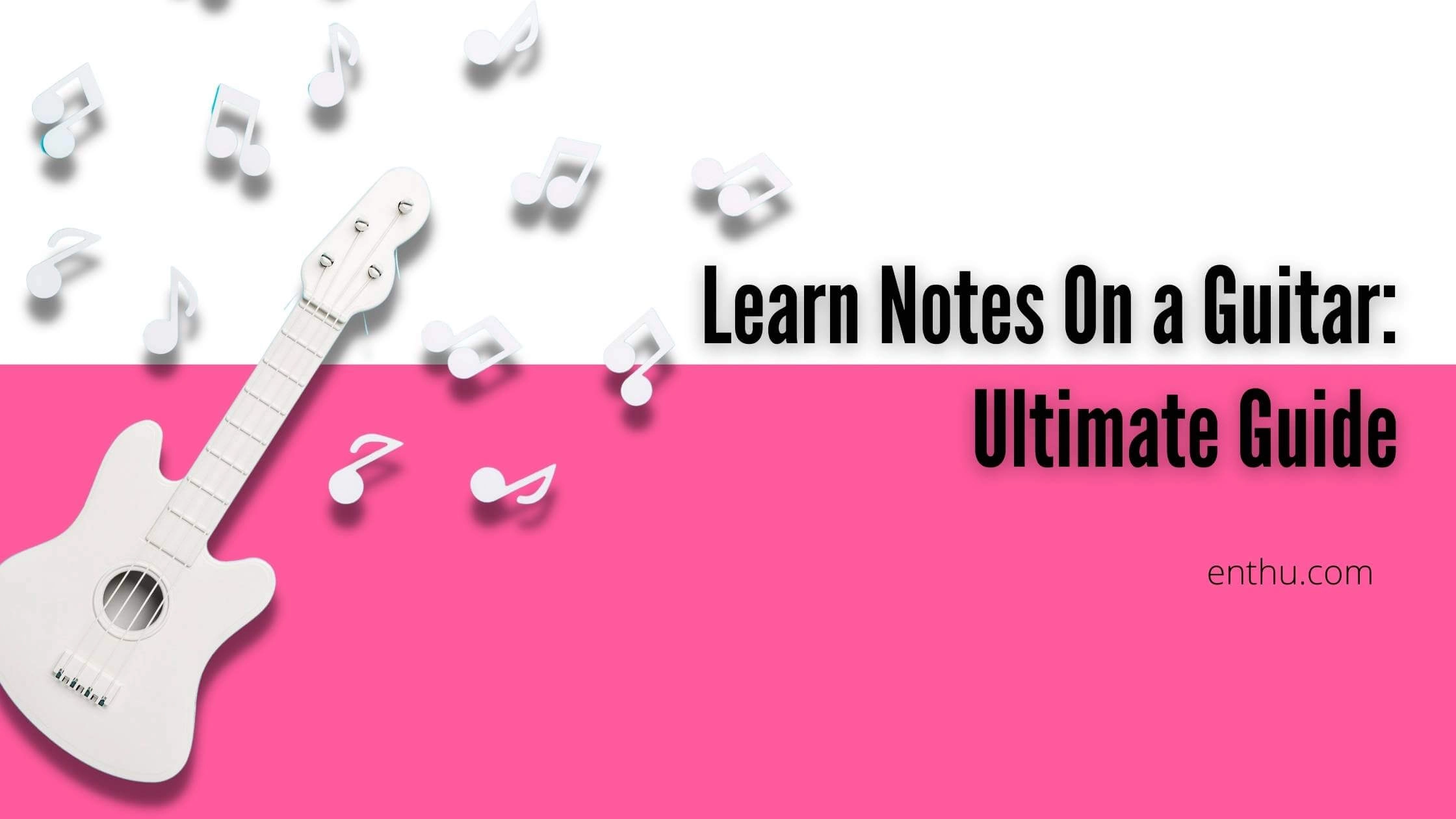Every guitarist wants to play jaw-dropping solos and cool riffs on their guitar. Frankly, all it takes is striking the right 'note.' If you have already started playing the guitar or at least nurtured with it, you are familiar with this term.
Just like you learn the alphabet before learning to speak, getting acquainted with the notes is essential for playing chords, scales, and songs. So, what are the notes on a guitar, and what purpose do they serve? Let's find out.
What is a Note

There's no need to get nervous; we're going to discuss a bit of theory. In simple words, a note is a symbol that signifies a particular sound. A note represents the length of music notation, pitch, and pitch class.
Notes are individual pitches, just like letters in the alphabet. Guitar notes don't repeat themselves in a set pattern, unlike piano notes.

1. Why Should You Learn Guitar Notes
Is it necessary to learn the notes before playing the guitar? Well, I am not saying that. You can definitely play the guitar without even knowing the names of the notes on the fretboard, but it is undoubtedly helpful for advanced learning if you know what notes you are playing.

Benefits of Learning Guitar Notes
Knowing the names and placements of notes on a fretboard allows you to learn modes and scales faster.
If you wish to become a professional guitarist, the notes will help you understand the complex musical theory and help with reading sheet music.
Knowing where the notes are will help you understand key signatures better, and you will be able to create chords on your own.
Learning the notes and the basic theory works as a tool to improve your learning. Sure, it won't make any difference in the beginning, but you will get its benefits when you reach the advanced level of playing.
Did You Know? People used animal gut and intestine to make guitar strings in the past. For such amazing facts, check out the history of Guitar. |
2. Guitar String
Notes Before you delve any deeper, you need to learn the names of the string notes. On a standard-tuned guitar, the notes are as follows: E (6th string), A (5th string), D (4th string), G (3rd string), B (2nd string), and E (1st string).

It means the notes are arranged from the thickest string to the thinnest string. FYI, there are alternative tunings for guitars as well, such as Open G tuning, Drop D tuning, and Open C tuning.
The names of the notes change in accordance with the tuning method. Although, let's stick to the most popular (standard tuning) for the time being.
Why Strings are Named after Particular Letters
The 6th string is the thickest string on your guitar, and it produces the lowest sound. This string is tuned to E note. Although, it is referred to as the low E string.
The next string (5th string) is tuned to an A note. That's why the string is referred to as A string. This string is also considered a bass string.
The 4th string is tuned to a D note. Naturally, the string is named D string after the note.
Well, no prize for guessing this one either. The G string (3rd string) is named after the G note it is tuned to.
Similarly, the B string is tuned to the B note.
Lastly, the 1st string (E string) is named after the E note it is tuned to. To be more specific, this string is called a high E string.
Mnemonics to Remember Guitar
Notes Sometimes, the most intelligent way to do something is by applying the silliest trick. Mnemonics are quirky and unforgettable. Here's a mnemonic to remember the guitar string notes:
EADGBE - Eddie Ate Dynamite Good Bye Eddie
Or,
EADGBE - Elephants And Donkeys Grow Big Ear Once you remember one of these, there's no going back. You can never forget the name of the guitar string notes.
3. Sharp and Flat
Notes We've already discussed natural notes; now, let's talk about sharp and flat notes. By now, the '#' and 'b' symbols might have caught your eye. Well, you are only half-step (pun intended) away then! Sharp notes and flat notes are just half-steps away from any natural note.
Now you might be thinking, what's the difference between sharps and flats? Well, it all depends on how you move the note. Every fret (half-step) changes the note into a sharp or flat.
Sharp notes are half-step up from a natural or whole note. Whereas, if you move one step down, it will lead you to a flat note. For example, if you move a half-step up from an A note, it will be A sharp or A#. Similarly, if you move a half-step down from the A note, you will get Ab or A-flat.
If you see a fretboard diagram with all the notes, you will see that all the notes have two names, excluding the whole notes. This might confuse you, but it is actually easy to understand.
For instance, the 4th fret of the 1st (high E) string is both G# and Ab. If you look closely, the 3rd and 5th fret of the same string is G and A whole notes. So, if you are stepping up, then the note between G and A is G#, and if you are stepping down, it's Ab.
Quick summary: Sharp is when you half-step up, and flat is when you half-step down.
EnthuZiastic Guitar Classes - Designed for the Rock Star in you.
4. BC and EF Rule
The BC and EF rule states that all the natural notes are followed by shaps and flats between them except B & C and E & F. Simply speaking if you step up or down a half-step from these notes, you will reach the next natural note.
So, if you move a half-step up from B, it will lead you to the following Whole note, C. Similarly, moving up a half-step from E leads to F.

5. Musical Alphabets
According to Western Music Theory, there are only 12 musical notes. The notes for the guitar are similar to that of saxophone, flute, violin, and bass. The 12 musical notes are:
A, A#, B, C, C#, D, D#, E, F, F#, G, G#, A
Or,
A, Bb, B, C, Db, D, Eb, E, F, Gb, G, Ab, A
6. Notes on the Fretboard

Notes on the Freboard Here is a picture of all the notes on a guitar. I understand that it is a little overwhelming. Hence, I'm breaking it down into each string.

High E String (1st String)
F, F#/Gb, G, G#/Ab, A, A#/Bb, B, C, C#/Db, D, D#/Eb, E.
B String (2nd string)
C, C#/Db, D, D#/Eb, E, F, F#/Gb, G, G#/Ab, A, A#/Bb, B.
G String (3rd string)
G#/Ab, A, A#/Bb, B, C, C#/Db, D, D#/Eb, E, F, F#/Gb, G.
D String (4th string)
D#/Eb, E, F, F#/Gb, G, G#/Ab, A, A#/Bb, B, C, C#/Db, D.
A String (5th String)
A#/Bb, B, C, C#/Db, D, D#/Eb, E, F, F#/Gb, G, G#/Ab, A.
Low E String (6th string)
F, F#/Gb, G, G#/Ab, A, A#/Bb, B, C, C#/Db, D, D#/Eb, E.


Conclusion
I hope you have taken the necessary notes for the guitar notes! Much of the learning notes involve memorizing and a bit of understanding of the musical alphabet.
Seeing all the note names on the fretboard might be overwhelming for you at first, but the good news is that you don't have to remember all the notes all along.
Once you start playing, you will automatically memorize all the notes along the fretboard. So, don't waste your time and sit for practice. If you are looking for all-inclusive personalized guitar lessons, check out EnthuZiastic guitar classes right now.
FAQs
1. How do I learn all the notes on the fretboard?
First of all, get familiar with the fretboard and all the string names. Once you understand the notes of the open strings (E, A, D, G, B, E), you will be automatically able to identify the notes.
From the first fret, count the following notes till the 12th fret according to the musical alphabet and include the sharps and flats between them.
2. Is it better to learn notes or guitar tabs?
It is easier to learn the notes first and then start playing songs with chords as a beginner. However, once you move along with your guitar lessons, it is more convenient if you learn guitar tabs. It will help you play complex compositions and create new music.
3. What are some essential guitar chords?
There are numerous guitar chords. However, starting with the basics seems rational. The basic guitar chords are A major, A minor, E major, E minor, D major, C major, and G major. Start playing the complex chords and progressions once you get along with these chords.
4. What is the standard tuning for guitar?
Standard tuning is the most popular tuning method. Guitars (as well as Violins, saxophones, and flutes) are usually tuned in an ascending sequence of perfect fourths and a single major third note. That's why the standard tuning for a guitar is E, A, D, G, B, and E.



.png)


Comments